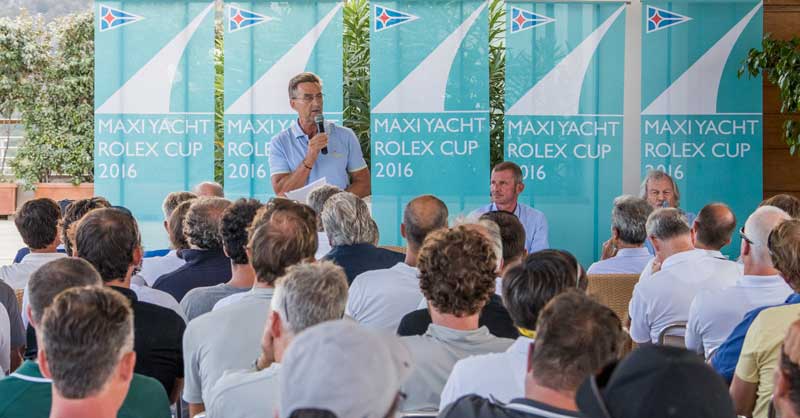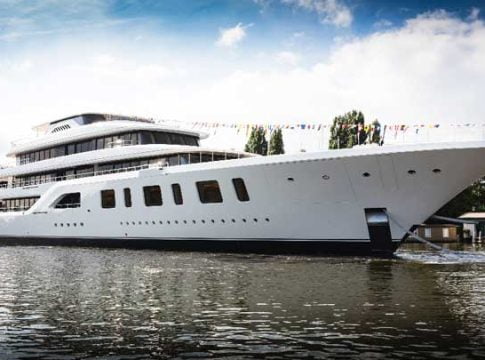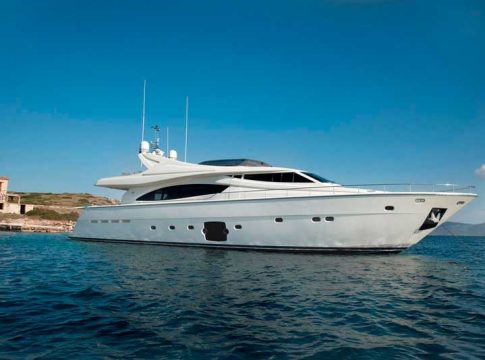The great and good of Maxi yacht racing are gathered in Porto Cervo the spiritual home for this the most glamourous and impressive class.
Some 52 yachts have registered for the 27th edition of the Maxi Yacht Rolex Cup. A record number and a remarkable achievement given the size of the boats concerned and the nature of the sporting contest, which requires these mammoth yachts to line up side by side on the starting line.
The Maxi Yacht Rolex Cup is one of yachting’s most revered and venerable competitions. First held in 1980, it was created by the organizing club, the Yacht Club Costa Smeralda (YCCS) itself founded in 1967 by H.H. the Aga Khan among others. The regatta is held in conjunction with the International Maxi Association (IMA), which was founded in 1980, and it enjoys the committed support of Rolex, title sponsor since 1984. Open to all yachts over 18.29 metres (60 feet) in length, it is the most complete test for the Maxi class. The largest yacht ever to enter is Hetairos at 66.7m; This year’s prize for size goes to the 49.7m Ohana.
For YCCS Commodore Riccardo Bonadeo, the 2016 Maxi Yacht Rolex Cup has all the ingredients for a spectacular week of racing: “Aside from being the largest we have hosted at the event, this Maxi fleet is also one of the most impressive in terms of quality. The technology, design and craftsmanship on display on the quays of Porto Cervo marina is really phenomenal, and covers the whole spectrum of today’s competitive Maxi sailing yachts.”
The fleet is composed of seven classes, each of which is racing for a coveted Rolex timepiece: SuperMaxis (over 30.5m); Maxi Racing and Maxi Racing Cruising (24.08 – 30.5m); Mini Maxi Racing and Racing Cruising (18.29 – 24.08m); Maxi 72s, sailing for their World Championship, and Wally yachts.
Andrew McIrvine, Secretary General of the IMA, is understandably delighted: “It is a very exciting year for the Maxi Yacht Rolex Cup. We have new boats, particularly new SuperMaxis, and an incredibly competitive fleet displaying huge enthusiasm and confidence.”
Understandably, McIrvine is immensely proud of the traditions and competition values of the event: “It is unique in the Maxi world, holding fleet starts for every class. This has been the case for more than 30 years and it has considerable draw. We’re helped by the beautiful surroundings, and importantly everyone knows the racing is well organized and the race management is good. The social side is also fantastic. This event remains the must do regatta for all those that sail big boats.”

Running the racing for this diverse fleet is not for the faint of heart. It requires detailed planning along with comprehensive knowledge of the Costa Smeralda, the Maddalena archipelago and its varied conditions. It also demands an inherent understanding of the yachts and their relative performance characteristics. Peter Craig, the Principal Race Officer from the United States, has been working with the YCCS Race Team for some nine years; he has the confidence and experience to set courses that are safe, enjoyable and testing. Significantly, he commands the confidence of the owners and crews to do so.
According to Craig there are a number of challenges presented by the event’s format: “This is a big fleet in number and in size of boats. We have ten SuperMaxis, a huge turnout for this type racing, along with nine Maxi Racing Cruising and Racing. Add the 13 Wallys, all of which are over 80 feet, and more than half the fleet is in the larger size bands.”
“The size of the boats though does not dictate the whole challenge,” he continues. “The diversity of the yachts and the number of starts required by the groupings also poses problems. We will be running six starts for the seven classes. The Mini Maxis will all start together, as will the Maxis. We have split the SuperMaxis into two starts of five for safety purposes. The brand new Swan 115 Highland Fling is highly manoeuvrable compared to, say, Ohana and the two J-Class yachts, Lionheart and Velsheda. You have to face up to the difficulties this creates. We’ve chosen to put the fast and manoeuvrable in one group, with the other group featuring yachts of differing performance capabilities, mostly the bigger and heavier displacement yachts.”
The weather forecast for the week looks to be another challenge. The expectation is strong winds from the west for tomorrow, Monday, and all classes will take on a coastal course. Looking further ahead, Tuesday could be a “stellar day” in the words of Craig, while Wednesday could be marginal with more high winds likely. Craig and his team are experienced enough not to look too far in advance and will take each day as it comes.
All things being equal racing will get underway at the 2016 Maxi Yacht Rolex Cup at 11.30CEST tomorrow, and continue through to Saturday, 10 September.





